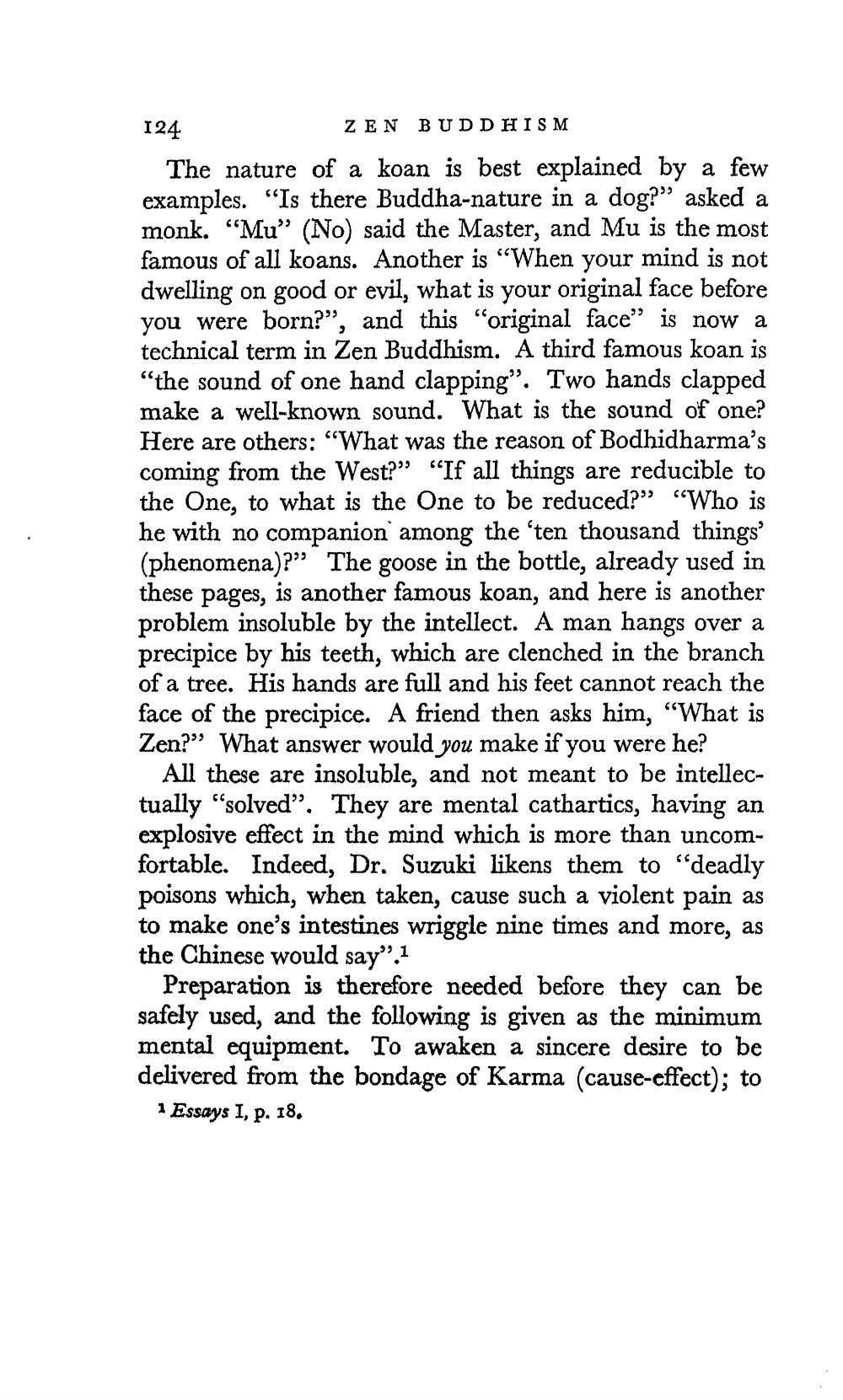________________
124
ZEN BUDDHISM
The nature of a koan is best explained by a few examples. "Is there Buddha-nature in a dog?" asked a monk. "Mu" (No) said the Master, and Mu is the most famous of all koans. Another is "When your mind is not dwelling on good or evil, what is your original face before you were born?", and this "original face" is now a technical term in Zen Buddhism. A third famous koan is "the sound of one hand clapping". Two hands clapped make a well-known sound. What is the sound of one? Here are others: "What was the reason of Bodhidharma's coming from the West?" "If all things are reducible to the One, to what is the One to be reduced?" "Who is he with no companion among the 'ten thousand things' (phenomena)?" The goose in the bottle, already used in these pages, is another famous koan, and here is another problem insoluble by the intellect. A man hangs over a precipice by his teeth, which are clenched in the branch of a tree. His hands are full and his feet cannot reach the face of the precipice. A friend then asks him, "What is Zen?" What answer would you make if you were he?
All these are insoluble, and not meant to be intellectually "solved". They are mental cathartics, having an explosive effect in the mind which is more than uncomfortable. Indeed, Dr. Suzuki likens them to "deadly poisons which, when taken, cause such a violent pain as to make one's intestines wriggle nine times and more, as the Chinese would say".1
Preparation is therefore needed before they can be safely used, and the following is given as the minimum mental equipment. To awaken a sincere desire to be delivered from the bondage of Karma (cause-effect); to 1 Essays I, p. 18.




